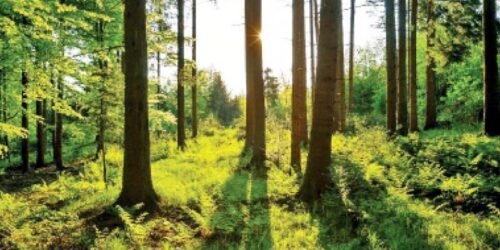The colour green, denoting cleanliness and freshness, has been reduced to a buzzword across the country, for projects aiming to counter the challenges of pollution, global warming and climate change registered to affect the atmosphere, public health, livelihood and ultimately the economy.
However, the question of sustainability is frequently ignored in such projects. The scenario in the metropolis is no different, with different groups, organisations and people in their individual capacities trying to provide much required “green cover” during the ongoing, country-wide, monsoon season tree plantation.
The need for a comprehensive approach to ensure that campaigns are organised with due care towards sustainability is, however, is generally felt to be a missing link.
“Ecological compatibility of chosen trees coupled with optimum care towards sustainability and deep sense of ownership are key requirements for the success of the efforts being made towards the cause,” said Dr Rafiul Haq, a senior plant ecologist.
As per available literature, the industrial hub of the country, which falls in the arid zone, has many indigenous varieties of plants that match the specified conditions in terms of its ecosystem.
People keen to plant fruit trees can go for Jujuba , Moringa, Chiku, Jungle Jalebi, Lasura, Shareefa or Custard Apple seedlings. For those interested in flowering trees, the choice could be Amaltas , Gul Mohar and Lignum (which is not local but is acclimatised).
Meanwhile, trees that provide shade such as Neem, Peepal, Banyan, Siris and Bakain can particularly help counter heat island risks.
All these, besides certain other varieties that may not be indigenous but are low cost, compatible to local conditions and require little upkeep, are readily available.
The Kidney Hill Park is a good example with more than 53 different species planted in recent years blooming there – under the supervision of a senior civil servant and in close coordination with the nongovernmental organisation, Shehri – Citizens for A Better Environment.
“We have managed to plant 130,000 trees of different varieties, many of which can be seen bearing fruits while others are blossoming with flowers, said Dr Saifur Rehman, former municipal commissioner, who worked on developing the park.
“These also attract insects, bees and butterflies (integral components of habitat),” said Rehman, hopeful this is replicated by other stakeholders.
Referring to lessons learnt with the Paper Mulberry plant, which led to a rise of pollen allergies in Islamabad, he warned that the risks associated with species alien to a region’s climate. Such plants can not only affect ecosystems but are also hazardous to human health, he said.
Similarly in Karachi, the damage caused by Eucalyptus and Conocarpus, impacted sewerage lines, water supply and the local environment, he recalled.
“Ours being a resource constrained country demands extreme care in making choices ensuring that they are environment friendly, essentially shade providers and are not water intensive,” said Abdul Hadi, a retired banker involved in efforts to restore abandoned green belts and parks over the past few years.
Elaborating further, he underscored that water is fast becoming a diminishing resource and that the authorities need to come up with a pragmatic approach to treat waste water.
He urged people participating in tree plantation campaigns to consider sustainability of the species they plant. And to familiarise themselves with the conditions required for such saplings besides realising that plantation cannot be done round the year but during specific seasons – Spring that lasts from mid February to mid April and the monsoon season that lasts from midJuly to mid September.
There are, however, many in Karachi who do not agree with season specific plantations for the metropolis and Shahzad Qureishi, the pioneer of the Urban Forest project is among them.
“Karachi with [its] moderate, mild and almost uniform weather conditions during 12 months is an exceptional case where trees can be planted any time with due care towards certain basics,” he said.
Meanwhile, Mrs Amra Javed, an activist affiliated with ShehriCitizens For A Better Environment, said attention was being paid to motivate citizens in general towards protection of trees and plants in their neighbourhoods.
“This is very important as Karachi needs no less than 1.4 million trees to absorb carbon emissions from our environment and generate much needed oxygen for our industrial cum commercial centre,” said Dr Haq.
“I, however, do believe that the goal to turn the city Green has to be institutionalised as well as specialised as haphazard and scattered activities do spoil the efforts at a large scale, causing a serious sense of disillusionment among many well meaning and motivated individuals.” Emphasising the importance of micro-management for mass level campaigns, he appreciated the prime minister’s initiative of planting 10 billion trees.





